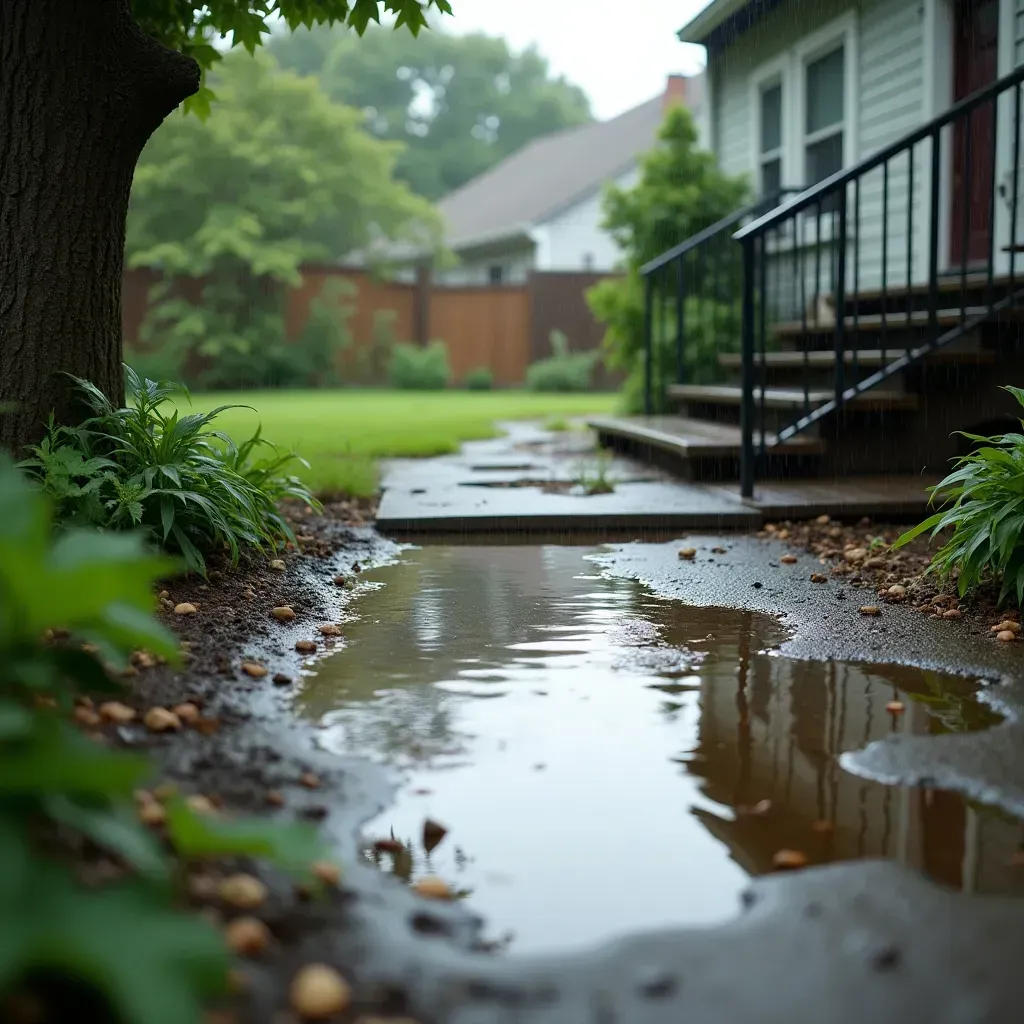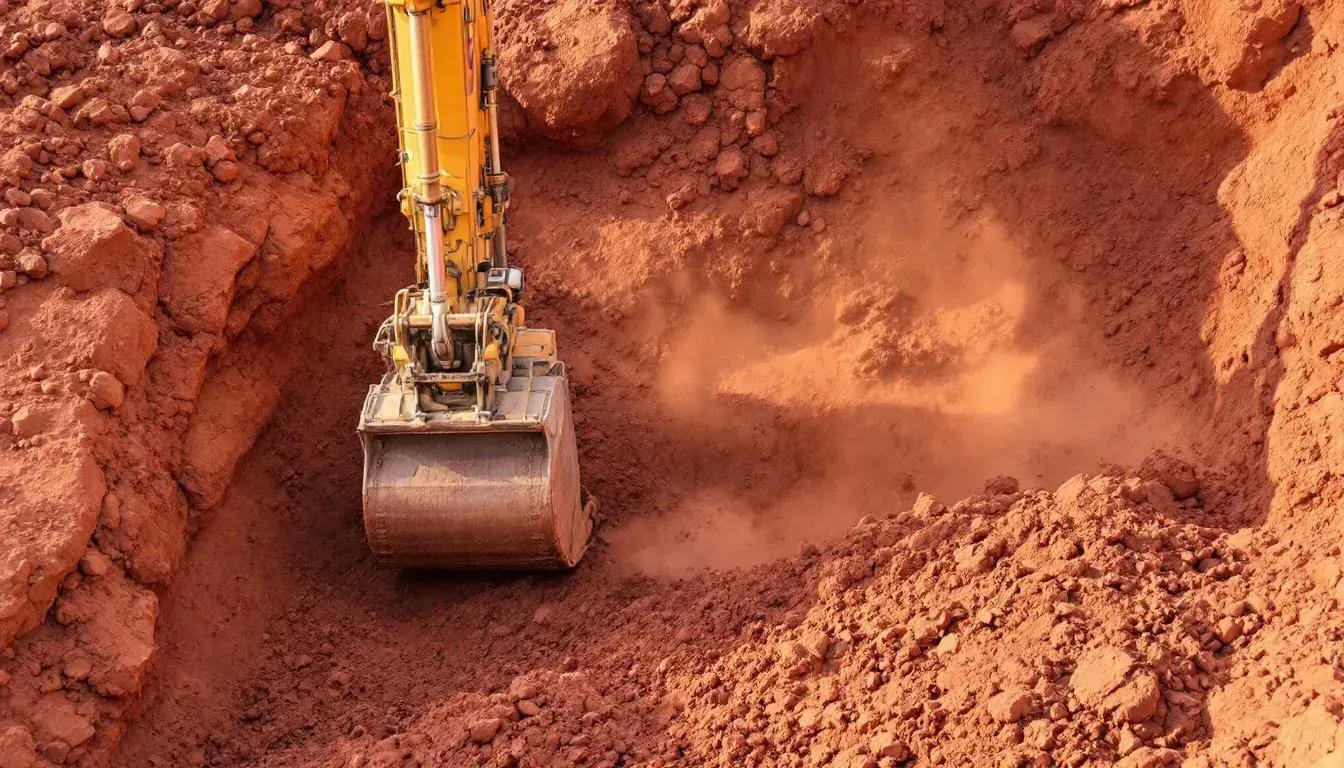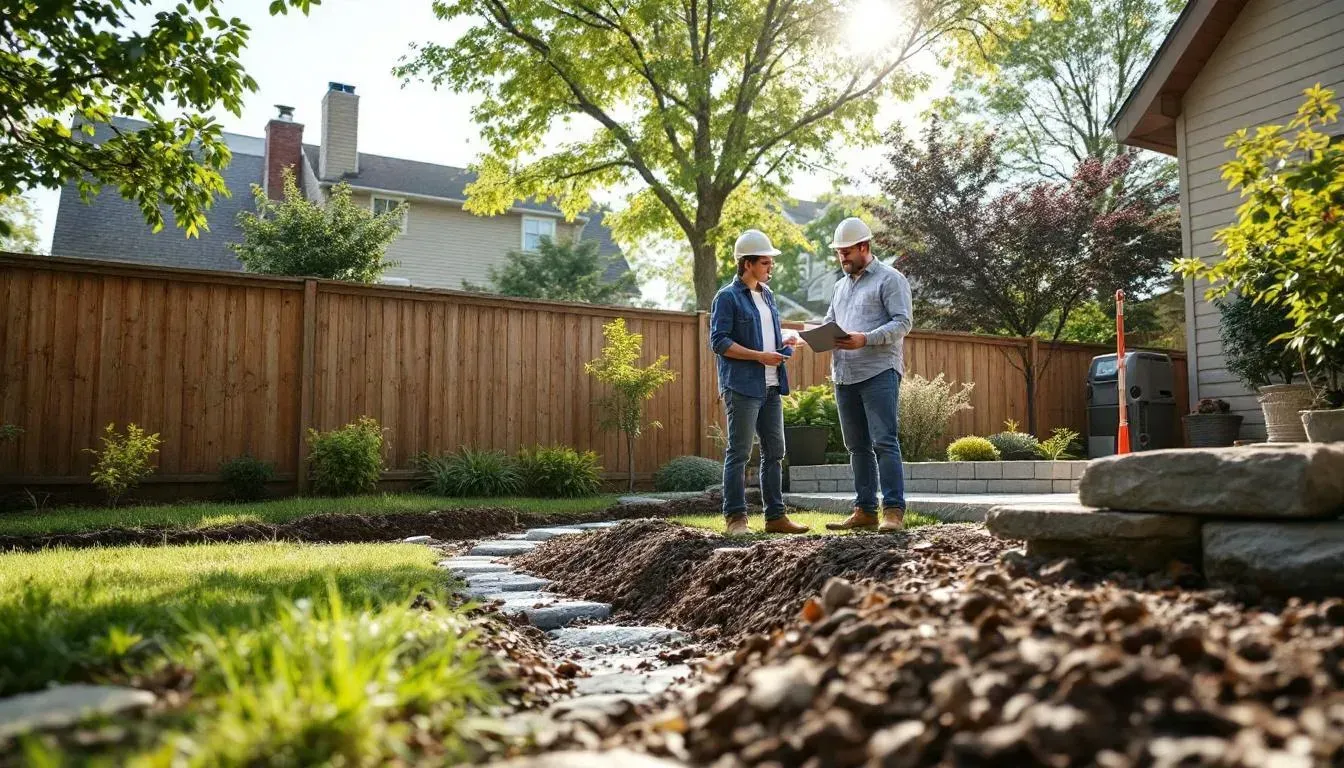How Much Does an Underground Drain Cost in Wichita?
Got water sitting in your yard after it rains? Seeing wet spots in your basement? If you live in Wichita and have water problems around your house, you're definitely not the only one. Bad drainage is super common here, and putting in an underground drain system is usually the best way to fix it for good.
Underground drains work by moving extra water away from your house and the soggy spots in your yard. These systems use buried pipes and rocks to catch water and send it somewhere else, keeping your home dry and your yard healthier.
Wichita has some tricky things that make drainage harder than other places. Our soil is mostly heavy clay, which doesn't soak up water very well. Instead, water just sits on top of the ground. Add in Kansas weather that can dump a lot of rain really fast, and you've got a recipe for water problems that simple fixes just can't handle.
The cost of putting in underground drainage depends on what type you need, how big your project is, and what your yard is like. Sure, it costs money upfront, but good drainage protects your home from expensive water damage that could cost you thousands of dollars to fix later.
In this guide, we'll break down what different types of underground drains cost, talk about things that affect prices here in Wichita, and help you know what to expect when you're planning your drainage project.
[Ready for your underground drains? See our Underground Drain Services in Wichita!]

Types of Underground Drainage Systems
When it comes to fixing water problems around your house, there are several different types of underground drains you can choose from. Each one works a little differently and is better for certain situations. Let's look at the most common ones:
French Drains
A French drain is probably the most popular choice for yard drainage. It's basically a trench filled with gravel and a perforated pipe that collects water and moves it away from problem areas. French drains work great for soggy yards, water pooling around your foundation, or anywhere you have standing water after it rains. They're especially good here in Wichita because they can handle our clay soil pretty well.
[Learn more about French Drains]
Catch Basins and Storm Drains
Think of these like big underground buckets with grates on top. Water flows into the grate and gets collected in the basin below, then flows out through connected pipes. Catch basins are perfect for areas where water collects fast, like at the bottom of your driveway or in low spots in your yard. They're also great for connecting to your downspout drainage.
Channel Drains
Channel drains (also called trench drains) are long, narrow drains that sit right at ground level. You've probably seen these in parking lots or along sidewalks. They're perfect for areas where water flows across a surface, like driveways, patios, or walkways. The water goes right into the channel and flows away through underground pipes.
Sump Pump Systems
If you have a basement that gets wet, a sump pump system might be what you need. This system collects water in a pit (called a sump pit) and then pumps it up and out of your house. It's usually combined with other drainage like basement French drains to keep your basement dry.
Yard Drains and Dry Wells
Yard drains are simple drains placed in low spots where water collects. The water goes down through the drain and into underground pipes or a dry well system. A dry well is like a big underground storage tank filled with gravel that slowly releases water into the soil. These work well for handling rainwater runoff from roofs or driveways.
Each of these systems can work by itself, but sometimes the best solution is using a few different types together to handle all your water problems.
Cost Breakdown by System Type
Now let's talk about what you can expect to pay for different types of underground drains in Wichita. Keep in mind that prices can change based on your specific situation, but these numbers will give you a good starting point for planning your project.
French Drain Installation
French drains are usually priced by the linear foot, and you can expect to pay between $15-30 per foot for professional installation. For a typical backyard project of about 100 feet, that means you're looking at $1,500 to $3,000 total.
Here's how the French drain cost breaks down:
- Materials (perforated pipe, gravel, French drain fabric): $8-12 per foot
- Labor (digging, installation, cleanup): $7-18 per foot
The price depends a lot on how deep your French drain needs to be and what kind of soil you have. In Wichita, our clay soil can be tough to dig, which might push costs toward the higher end. If you're thinking about a DIY French drain, you could save on labor costs, but remember that proper French drain design and installation is really important for it to work right.
A basement French drain typically costs more, around $25-35 per foot – because it requires more careful work and often needs to connect to a sump pump system.
[Our French Drain services in Wichita specializes in this kind of underground drain]
Catch Basin Installation
Each catch basin usually costs between $300-800 to install, depending on the size and how deep it needs to go. A basic yard drain box might be on the lower end, while a larger storm drain installation will cost more.
Cost breakdown for catch basins:
- Materials (basin, grate, connecting pipe): $150-400
- Labor (excavation, installation, connections): $150-400
If you need multiple catch basins connected together, you might get a better price per unit. Many drainage contractors will give you a discount when installing several at once.
Channel Drain Systems
Channel drains (or trench drains) typically cost $20-40 per linear foot installed. For a standard driveway drain that's 20 feet long, you're looking at $400-800 total.
Here's the cost split:
- Materials (channel, grate, end caps): $12-25 per foot
- Labor (cutting concrete, installation): $8-15 per foot
Patio drainage using channel drains might cost a bit less if the ground is easier to work with. But if you need to cut through existing concrete for a driveway drain, expect to pay more.
Complete Yard Drainage Systems
For bigger projects that fix drainage problems across your whole property, most homeowners spend between $1,500-4,000. These projects usually combine different types of drains – maybe some French drains, a few catch basins, and proper grading.
A typical residential drainage system might include:
- 150 feet of French drain: $2,250-4,500
- 2-3 catch basins: $600-2,400
- Yard regrading: $500-1,500
- Connecting everything together: $300-800
Sump Pump and Basement Systems
A basic sump pump installation runs $800-1,500, but if you need basement waterproofing with interior French drains, the total project could be $3,000-8,000 or more.
Material vs. Labor Costs
Generally, you're looking at about a 60/40 split between labor and materials, with labor being the bigger chunk. That's why some people consider DIY drainage solutions, but remember that improper installation can lead to bigger problems down the road.
The good news is that these drainage solutions are a smart investment. Proper water runoff management protects your foundation and prevents way more expensive repairs later. Most drainage contractors offer free estimates, so it's worth getting a few quotes to see what makes sense for your specific situation.
Remember, the cheapest option isn't always the best. Good drainage design and quality installation will save you money and headaches in the long run.
Wichita-Specific Factors Affecting Cost
Living in Wichita comes with some unique challenges when it comes to drainage projects. These local factors can really affect how much you'll end up paying, so it's important to know what you're dealing with before you start.
Clay Soil Excavation Challenges
The biggest cost factor here in Wichita is our heavy clay soil. This stuff is tough to dig through, especially when it's wet. Clay soil doesn't drain well naturally, which is probably why you need drainage in the first place, but it also makes installation harder and more expensive.
When contractors have to dig through clay for French drain installation, it takes more time and sometimes requires special equipment. This can add $3-8 per linear foot to your project cost. The clay also makes it harder to get the right slope for your French drain, which means more careful grading work.
On the flip side, clay soil does hold trenches well once they're dug, so there's less risk of cave-ins during installation. But you'll definitely want to make sure your drainage contractor has experience with clay soil drainage – it takes different techniques than working with sandy or loamy soil.
Local Permit Requirements and Costs
In Wichita, you might need permits for bigger drainage projects, especially if you're doing major yard regrading or connecting to storm drains. Most residential French drains don't need permits, but it's always smart to check with the city first.
Permit costs in Wichita are usually pretty reasonable – typically $50-200 for drainage work. Some homeowners try to skip this step, but getting caught can cost way more in fines. Plus, having proper permits protects you if there are any problems later.
If your drainage system connects to city storm drains or affects water flow to neighboring properties, you'll definitely need permits and possibly inspections.
Seasonal Installation Considerations
The best time for drainage solutions in Wichita is late spring through early fall. Winter installations can be really tricky because frozen ground is nearly impossible to dig through clay soil. This means most drainage contractors are busiest during good weather, which can drive up prices.
If you can be flexible with timing, you might save money by scheduling work in late fall or early spring when contractors aren't as busy. Just avoid scheduling right after heavy rains when the clay soil is like concrete.
Common Neighborhood Drainage Issues
Many Wichita neighborhoods were built before modern drainage standards, so whole areas might have similar problems. Issues like poor street grading, old storm drain systems, or neighborhoods built in natural low spots are pretty common.
Sometimes these area-wide problems mean your drainage project needs to be more extensive than you first thought. You might need to work around existing utility lines or deal with water that's flowing from several houses uphill from you.
The good news is that experienced local drainage contractors know these neighborhood patterns and can design better solutions because they've worked on similar problems nearby.

Additional Costs to Budget For
When you're planning your underground drainage project, don't forget about these extra costs that can add up quickly. It's better to know about them upfront so you don't get surprised later.
Permits and Inspections
As we mentioned, most drainage projects in Wichita need permits that cost between $50-200. Even if your French drain installation doesn't require a permit, it's worth calling the city to double-check. Some bigger yard drainage systems or anything that connects to city storm drains will definitely need permits.
Utility Marking Fees
Before any digging starts, you need to have utilities marked so workers don't hit gas, electric, or water lines. In Kansas, you can call 811 for free utility marking, but some contractors charge $50-100 to handle this for you. Don't skip this step – hitting a utility line can cost thousands to fix and is really dangerous.
Landscaping Restoration
Installing drainage means digging up parts of your yard, so you'll need to fix your landscaping afterward. Budget $300-1,000 for reseeding grass, replanting shrubs, or fixing flower beds. If you have a really nice lawn or expensive landscaping, this cost could be higher.
Some drainage contractors include basic grass seeding in their price, but anything fancy like sod or new plants usually costs extra.
Concrete and Driveway Repairs
If your drainage system needs to go under driveways, sidewalks, or patios, you'll need to pay for cutting and repairing concrete. Driveway drain installations often require cutting through existing concrete, which can add $200-800 to your project.
Unexpected Issues
It's smart to budget an extra 10-15% for surprises. You might hit rock that's hard to dig through, find old utility lines that aren't marked, or discover that your drainage problem is bigger than you first thought.
These extra costs are just part of doing drainage work right, but knowing about them helps you plan better.
DIY vs. Professional Installation
Many homeowners wonder if they can save money by installing their own drainage system. While it's possible to do some drainage work yourself, there are important things to consider before you decide.
Cost Comparison
A DIY French drain can cost about half as much as hiring professionals. For materials only, you're looking at $8-12 per linear foot compared to $15-30 installed. So a 100-foot French drain might cost $800-1,200 in materials versus $1,500-3,000 professionally installed.
But remember, you'll need to rent tools like a trenching shovel or small excavator, which can add $200-500 to your project. Plus, your time has value too.
When You Need Professionals
Some jobs really need experts. Basement French drain systems, anything involving electrical work for sump pumps, or projects requiring permits should be left to professionals. If you're dealing with complex yard grading or connecting to existing storm drains, hire a drainage contractor.
Also, if your project is near your foundation or involves cutting concrete, the risks of doing it wrong are just too high.
DIY Risks
The biggest risk is that improper installation won't work. Wrong slopes, poor gravel selection, or bad pipe placement can make your drainage system useless. Even worse, directing water the wrong way could cause new problems or damage your neighbor's property.

Conclusion
Installing underground drainage in Wichita typically costs anywhere from $1,500 for a simple French drain to $4,000 or more for complete yard drainage systems. While that might seem like a lot of money upfront, proper drainage protects your home from much more expensive water damage down the road.
The key things that affect your cost are the type of system you need, how much drainage you're installing, and Wichita's challenging clay soil conditions. Whether you choose French drains, catch basins, or a combination of systems, the most important thing is getting it designed and installed correctly.
Don't try to cut corners on drainage, it's one of those things that needs to be done right the first time. Poor drainage installation often means starting over, which costs way more than doing it right from the beginning.
If you're dealing with water problems around your Wichita home, the best first step is getting a few quotes from experienced local drainage contractors. They can assess your specific situation and recommend the most cost-effective solution for your property.
Remember, good drainage isn't just about fixing current problems, it's an investment in protecting your home's foundation and keeping your property value strong for years to come.
[See our Underground Drain Services to get your drains installed or maintained!]
